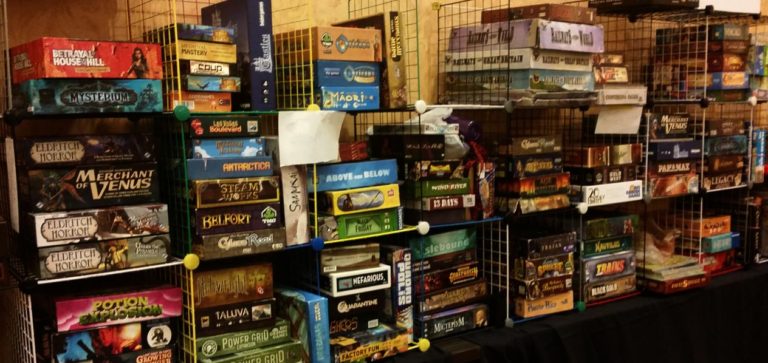Time Machine posts are a look back at games that are 30+ years old. We’ll share some of the history behind the game and why we believe it should have a place on your family game shelf.
Our eleven year old son spent a couple days with the grandparents in Florida at the beginning of the Summer. When he got back home, he mentioned that they played multiple games of something called “Rummikub” and he loved it. In this post, we hope to share why this tile-based game from the 1970’s has made its way into our family game library.
Humble Beginnings
In the 1930’s and early 40’s, Ephraim Hertzano was a Romanian citizen living under the Communist regime. As a response to the government outlawing the use of playing-cards, Ephraim started to develop the game that we know as Rummikub.
Hertzano moved to Israel in the late 1940’s after World War II had ended. He continued to build and develop this tile-based game in his backyard with his family. He had a background in selling toothbrushes and cosmetics, so he applied some of this knowledge to selling his new game creation door-to-door and later in small shops.
The family licensed the rights to different country’s over the years and by 1977, Rummikub was Israel’s #1 export. The game had already been on store shelves in the United States since 1964 by the time it was a best-selling game in ’77.
Rummikub has won numerous awards over the years including the 1980 Spiel des Jahres award (German Game of the Year).
A Melting Pot of Inspiration
The game contains 106 tiles that range from 1 to 13 with two joker tiles. Rummikub takes a inspiration from the card game Rummy, the tiles remind you a lot of dominoes and has a similar play style to a European game called Vatikan.
The family licensed the rights to different country’s over the years and by 1977, Rummikub was Israel’s #1 export.
You can play with 2 to 4 players who start off with 14 tiles that have been randomly drawn. The players have to start by laying down a run (three or more tiles of the same color in consecutive order) or a group (three or four tiles that share the same number but a different color) with a value of 30 points or more. If you cannot make one of these sets, you have to draw a random tile from the table.

Players can play tiles off sets that are currently on the table or make new sets of 3 or more tiles. The round continues until one player is out of tiles on their rack. Players that have tiles left on their rack take negative points for this round. The winner of the round takes a positive score based on all the players left-over tiles.
A Game for All Ages
This game has been around for so long that it’s a staple in many homes already. The first time my wife and I played Rummikub was with another couple about 6 years ago. The game is simple enough for kids to understand and is strategic enough for adults to enjoy.
The game feels nostalgic and reminds us that table top games have been gathering people around tables for centuries. Rummikub is available in 26 languages and more than 50 countries and simple to find in most retail store shelves. This is one game that breaks down generational and even cultural barriers to bring everyone around the table.





